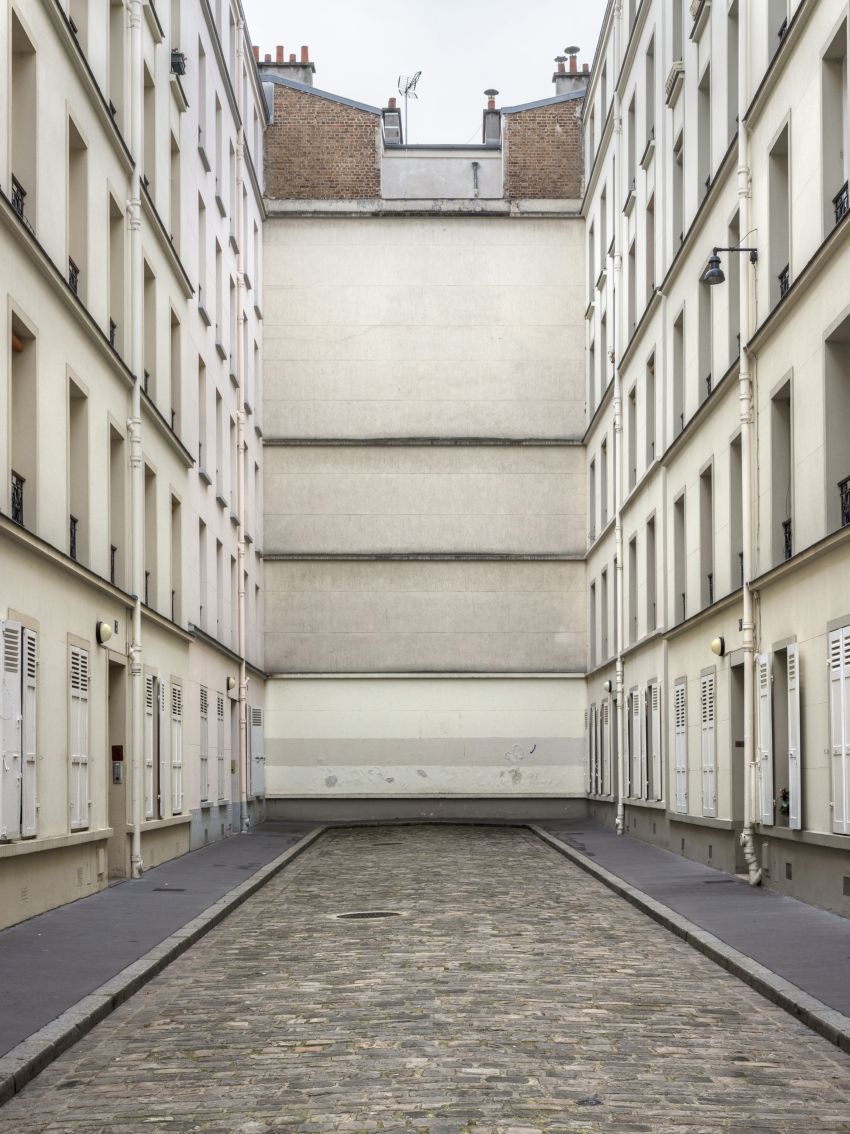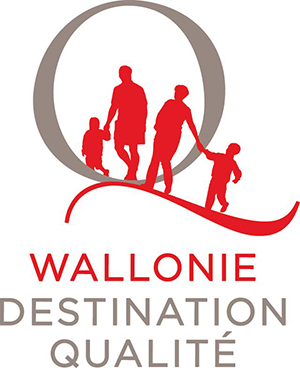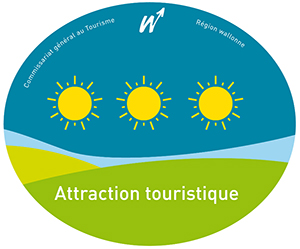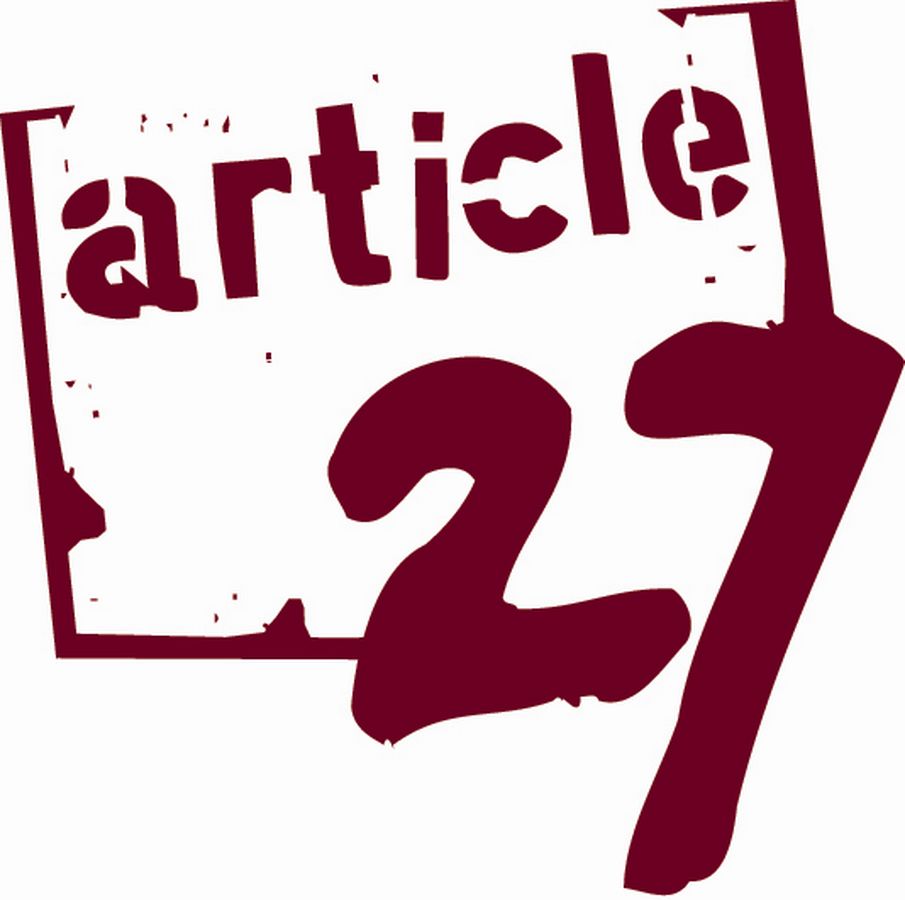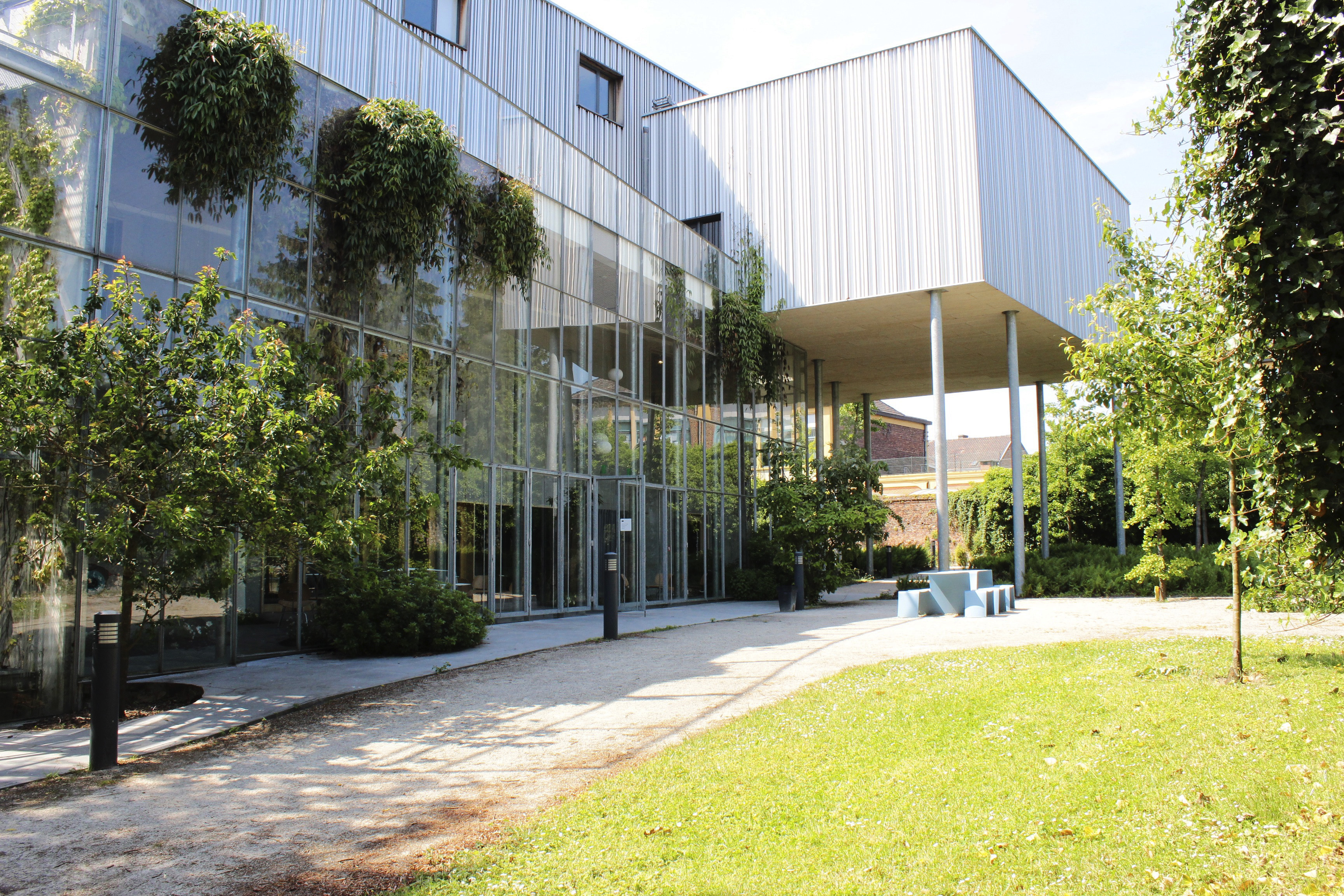Between 2011 and 2021, the Belgian photographer Karin Borghouts made a pictorial inventory of Paris’s impasses, mostly during an artist-in-residence period in 2015, thanks to the Flemish Government. Paris is the most densely populated city in Europe, with more than 54,000 inhabitants per square mile, and numbers more than 600 streets that come to a dead end.
Karin Borghouts adopted a methodical approach to the dead end streets of Paris, exploring the city arrondissement by arrondissement. She photographed almost 400 dead ends in Paris, with each of her photographs meeting the demands of technical skill, constant skyline positioning and carefully crafted composition. People do not appear in her photographs. The photograph therefore only shows the spatial setting, almost out of time, where plants, tables and chairs are installed here and there, alongside cars, motorbikes of bicycles. Action, if action there was, took place before or after the photo was shot, but never during shooting. By erasing the living, Karin Borghouts succeeds in giving a timeless quality to her pictures. Ultimately, the places photographed have one thing in common. They all tell a story; their story and the story that we will invent for them.
Karin Borghouts (Kapellen, 1959) studied painting and sculpture. After working as a graphic designer, she discovered a vocation as a photographer and integrated these other disciplines into her photography. She is best known for her photographs of buildings and interiors, sites in public space and museums, which appear as a scene from which the human figure is absent.
She works on her own projects and carries out various assignments for museums, cultural institutions, public authorities, architects and publishers. Her artistic projects include most notably The House, in which she pictures the charred interiors of the house of her childhood, destroyed by fire. In 2005, she was commissioned to carry out the prestigious assignment European Eyes on Japan. In 2012 and 2013, she was a photographer for the city of Antwerp. From 2011, she also photographed the renovation of the Royal Museum of Fine Art in Antwerp, as site photographer.
She has many exhibitions to her credit, in Belgium and abroad, both solo and group exhibitions, together with various publications such as The House, Paris Impasse, Vincent was here et Antwerpen Stad verbeeld. Her works can be found in particular in the collections of the museum of photography of Antwerp and Charleroi, in the MAS museum in Antwerp and in the STAM – Ghent City Mu- seum, as well as in collections of works of art by Proximus and the University of Antwerp.
Picture: Villa Letellier, Paris. De la série Paris Impasse. © Karin Borghouts
Museum of Photography, Avenue Paul Pastur 11 6032 Charleroi Museum of PhotographyBetween 2011 and 2021, the Belgian photographer Karin Borghouts made a pictorial inventory of Paris’s impasses, mostly during an artist-in-residence period in 2015, thanks to the Flemish Government. Paris is the most densely populated city in Europe, with more than 54,000 inhabitants per square mile, and numbers more than 600 streets that come to a dead end.
Karin Borghouts adopted a methodical approach to the dead end streets of Paris, exploring the city arrondissement by arrondissement. She photographed almost 400 dead ends in Paris, with each of her photographs meeting the demands of technical skill, constant skyline positioning and carefully crafted composition. People do not appear in her photographs. The photograph therefore only shows the spatial setting, almost out of time, where plants, tables and chairs are installed here and there, alongside cars, motorbikes of bicycles. Action, if action there was, took place before or after the photo was shot, but never during shooting. By erasing the living, Karin Borghouts succeeds in giving a timeless quality to her pictures. Ultimately, the places photographed have one thing in common. They all tell a story; their story and the story that we will invent for them.
Karin Borghouts (Kapellen, 1959) studied painting and sculpture. After working as a graphic designer, she discovered a vocation as a photographer and integrated these other disciplines into her photography. She is best known for her photographs of buildings and interiors, sites in public space and museums, which appear as a scene from which the human figure is absent.
She works on her own projects and carries out various assignments for museums, cultural institutions, public authorities, architects and publishers. Her artistic projects include most notably The House, in which she pictures the charred interiors of the house of her childhood, destroyed by fire. In 2005, she was commissioned to carry out the prestigious assignment European Eyes on Japan. In 2012 and 2013, she was a photographer for the city of Antwerp. From 2011, she also photographed the renovation of the Royal Museum of Fine Art in Antwerp, as site photographer.
She has many exhibitions to her credit, in Belgium and abroad, both solo and group exhibitions, together with various publications such as The House, Paris Impasse, Vincent was here et Antwerpen Stad verbeeld. Her works can be found in particular in the collections of the museum of photography of Antwerp and Charleroi, in the MAS museum in Antwerp and in the STAM – Ghent City Mu- seum, as well as in collections of works of art by Proximus and the University of Antwerp.
Picture: Villa Letellier, Paris. De la série Paris Impasse. © Karin Borghouts

